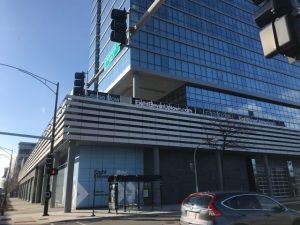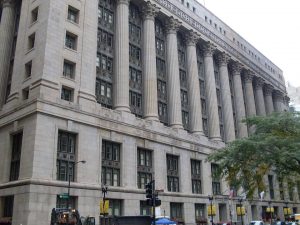Story by Hannah Butemeyer
April 3, 2009 – On February 20, three teenagers were killed at 87th Street and Exchange Avenue after gunfire erupted. There was a police camera at that intersection, but when officials pulled the video from that camera to review it, they discovered nothing had been recorded.
Police Observation Devices (PODS) are cameras the police department sets up in high crime areas and are visibly marked by flashing blue lights and police markings. They were originally designed to deter crime from happening and to help solve crimes in the area.
“These cameras were a waste of money,” said Neil Bosanko, executive director of the South Chicago Chamber of Commerce. “They are nothing more than a psychological method to make people think their community is safer.”
The camera that failed on February 20 is just one of 155 that were set up six years ago. The Chicago Police Department is working on updating all the old cameras with newer ones that 911 call centers can monitor directly.
“We are all for the cameras,” said Larry Perkovich, an assistant in the 10th Ward alderman’s office of John Pope. “The police department is supposed to maintain them, though.”
Bosanko said he questions how many crimes have actually been detected by the cameras. He witnessed an 8-year-old girl being beat by four other children directly under a camera and just outside a school, but no one was monitoring that camera when the crime was happening.
Funding for the cameras come from state grants for school safety, federal Project Safe Neighborhood funds, as well as other local, state and federal funds, according to Jonathan Lewin, commander of the Information Services Division at the Chicago Police Department.
The new cameras are monitored and controlled through the POD application system. This application records data from the cameras and logs maintenance and other requests. It can also produce statistics regarding use, inventory of video’s requested, and maintenance and repair logs.
“If the mayor insists these are a good idea, the monitoring of them should be privatized,” said Bosanko. “That way there would be plenty of people to watch each camera.”
According to the police website, the cameras have helped dramatically reduced crime in the areas they are set up in because people know they are being watched. Surrounding areas, however, reported an increase in criminal activity.
“Criminals know where the camera’s are and just move half a block out of view,” said Bosanko. “It’s a game unless there is one on every block.”
The most advanced cameras that have been put in place have license plate readers and cost $10,000 each. Others have gunshot sensors and can point in the direction shots were fired from. These are a first of its kind and Chicago currently has two.
“The police department sets up the [cameras] where they deem necessary, but aldermen can also use their menu money to purchase more if they want,” said Perkovich. Menu money is a set amount of money given to each alderman to spend on improvements in their ward.
Bosanko said the aldermen wastefully spent $35,000 on cameras in places they don’t belong. “Why not just hire more officers,” he said.
The camera at 87th Street and Exchange Avenue, had an internal short circuit. Once the old cameras are updated, they will be able to be monitored directly which can better ensure they are working properly.
“Did [the police department] just think crimes would stop if they set up cameras,” said Wes Thomas, a resident of Chicago. “If I see the flashing blue light, I just try to avoid the area all together.”











Be First to Comment